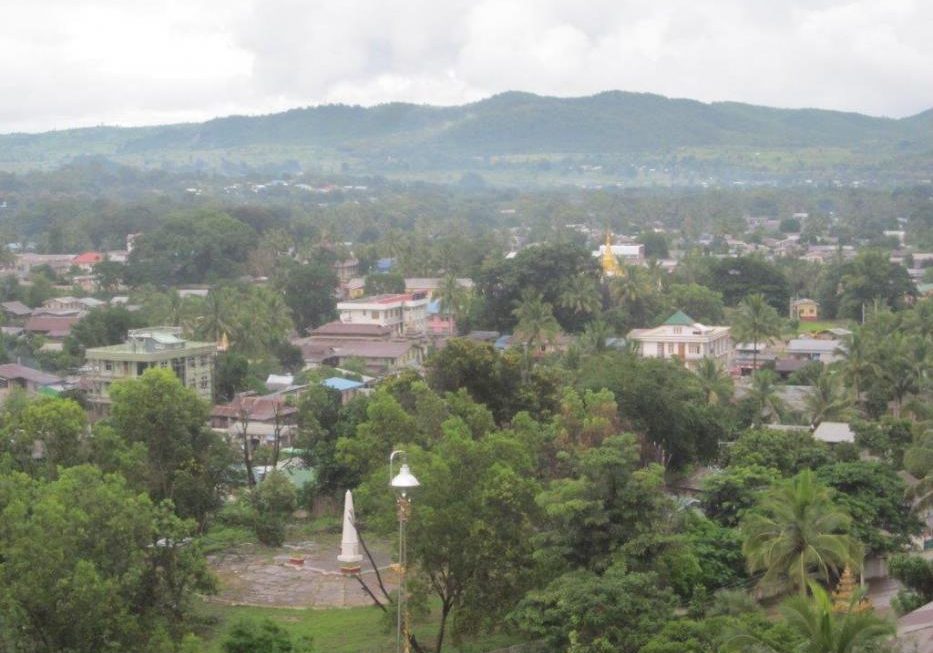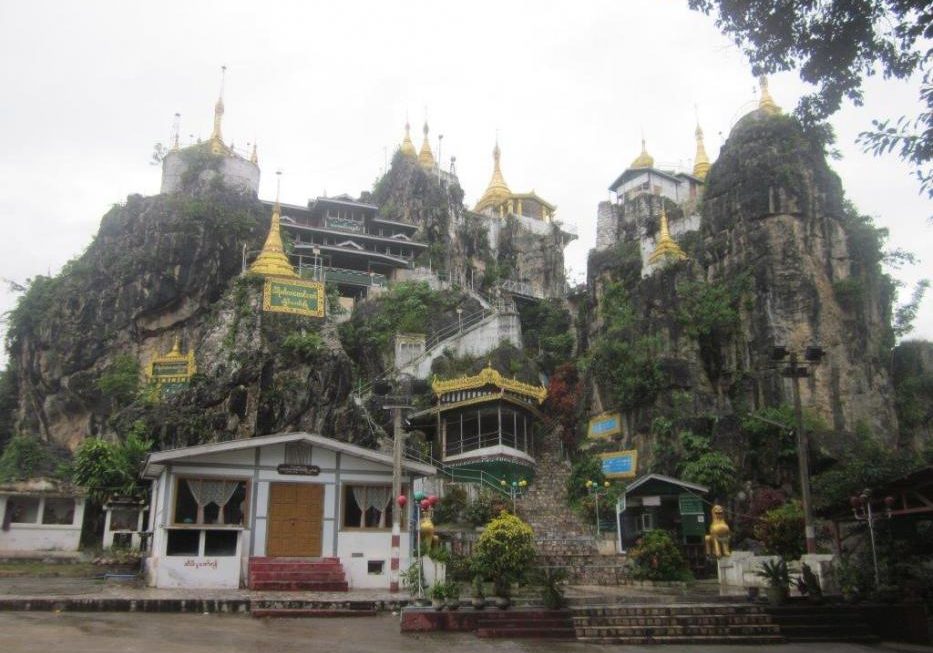Kayah State, formerly Karenni State, is bordered by the Shan Mountains to the north, Thailand's Mae Hong Son province to the east and Kayin (Karen) State to the south. It is the smallest of Myanmar’s seven states. The terrain is mountainous and is traversed by the Thanlwin (Salween), the principal river. The inhabitants of the state are known as Karens. The state is quite rich in hardwoods, with Kyun (teak wood) and others such as Pyinkado (Ironwood), Padauk and Ingyin. Other forest products are lac, resin and honey. Tin is found in the south of the state. Marble is also a product of Kayah. Agriculture is one of the main economies. Rice, wheat, maize, millet, ground nuts, sesame, cotton, soy beans, chili peppers, onions, garlic, tobacco, oranges, bananas and vegetables are grown. Myanmar's largest and most important hydroelectric power plant has been constructed at BaluChaung Waterfalls at LawPita some 12 miles south of Loikaw, the capital of Kayah state.
How to get there
Newly opened to tourists, most visitors arrive in the state capital Loikaw by air from Yangon, by boat or road from Inle Lake, or by road from Heho Airport.
By air: Flights from Yangon to Loikaw take approximately one hour. Loikaw is now served almost every day by Air KBZ (www.airkbz.com) and Myanmar National Airlines (www.flymna.com).
Please check the websites for up-to-date schedules.
By boat: Visitors can travel from Nyaungshwe / Inle Lake to Pekong Pier, and then take a transfer by taxi or minivan to Loikaw (approximately 45 minutes).
By car: The journey from Nyaungshwe to Loikaw by private vehicle takes about 5 hours (up to 7 hours by public transport). One can also travel to Loikaw by road from Yangon. The journey takes two days with an overnight stay in Taungoo.
Places of interest
LOIKAW
The capital of Kayah State, Loikaw (named by the Shan people) describes the dividing point between two mountains: Shwe Taung and Thiri Mingalar Taung. ‘Loi’ means mountain and ‘Kaw’ means separate. The town’s most iconic site is Taung Kwe Pagoda, also known as the Broken Mountain, which offers stunning panoramic views of the urban area and surrounding mountains. The reclining Buddha, churches, colourful markets, a museum, and traditional crafts workshops are also highlights.
Beyond these sights, Loikaw is a genuinely great place to meet local people and soak up the town’s gentle, laid-back and friendly atmosphere. The beautiful Belu Chaung River runs through Loikaw. The scenic Naung Yah Lake is a great place to go for a morning walk, or enjoy tasty local food in the evening at sunset.
TAUNG KWE PAGODA (Broken Mountain)
The most famous religious landmark of Loikaw is the Thiri-Mingalar Taung-kwe Pagoda. Taung Kwe means ‘broken mountain’. It is also called Thirimingalar Taung Zedi as it was built on the hillock called Thirimingalar.The pagoda is 380 feet high and was built on 9 natural hillocks. It is called ‘Phaw Pye’ in Kayah language. You can enjoy great views of the marvellous landscape of Loikaw from the top.
HAW NAN MONASTERY
Haw Nan Monastary, known as Kandarawwady Haw Nan, is one of the oldest buildings in Kayah. It was built during the First World War (1912-1916) by Zaw Bwa Saw Pyar Du Sat Khun Li, the chief of Kayah. Three staircases lead up to the monastery. Old photos and furniture from Zaw Bwa’s family transport visitors 100 years into the past. In 1994, relatives of the last chief donated the building to become a monastery.
NAUNG YAH LAKE
Naung Yah Lake is a very popular spot for local people to enjoy a morning or evening stroll, or a picnic with family and friends. Some paddle boats are available, as well as opportunities to go fishing. In the evening, local people enjoy eating by the lakeside, where there are several tasty local restaurants.
LOIKAW CULTURAL MUSEUM
The Loikaw Museum is well worth a visit. It has an interesting collection of historical artefacts, including sacred frog drums – a symbol of Kayah identity. Other exhibits include a colourful collection of traditional costumes worn by Kayah’s different ethnic groups. English-language media is under development. Opening hours are 9 AM to 4.30 PM. A visit takes approximately 45 minutes.
THIRIMINGALAR MARKET
Is open every day from 6 AM to 5 PM except full moon days. The market has a great variety of items, local foods, vegetables, fruits and spices with wonderful contrasting colours and fragrances. Visitors can also find household goods and clothing which make special mementos of a visit to Kayah.
BAHO-ZAY-MARKT
Auf diesem Markt in der Daw-Na-Straße finden Sie viele leckere lokale Speisen und typische myanmarische Teestuben. Sie können frische heiße Speisen kaufen; gehen Sie dabei allerdings umsichtig vor. Wenn Sie zum ersten Mal in Myanmar sind, sollten Sie vorsichtig auswählen.
BAHO ZAY MARKET
Located on Daw Na Street, this market has plenty of tasty local food and typical Myanmar tea shops. It is possible to buy hot, fresh food; however, use your discretion. If this is your first time in Myanmar, you should choose with caution.
Other places of interest near Loikaw
DEMOSO MARKET
Is located to the south of Loikaw. It takes 30 minutes to travel by car or bike from Loikaw. The market is open 3 mornings a week (Monday, Wednesday and Saturday). The best time to visit is from 6 to 10 AM. The market is famous for its traditional millet/rice wine. The vendors are from the local area, allowing visitors to taste a large variety of local dishes: for example, Kayah sausage, meatballs made using a special recipe, and unique Kayah pepper.
KYET CAVE (YA SA KU IN THE KAYAH LANGUAGE)
Is located 12 miles to the east of Loikaw, 2,990 metres above sea level. It is an impressive natural cave made of limestone and dolomite. Ancient wooden coffins can be seen inside the cave. These coffins are 2 to 15 feet long. According to local legends, these coffins used to contain skeletons; however, these can no longer be seen in the cave.
HTEE SE KHA WATERFALL
Is a one hour drive to the west of Loikaw. It is a natural waterfall which flows from Nant Tan Bat Creek, on the border of Shan and Kayah States. Local people enjoy visiting the waterfall, especially around the New Year in April. Visitors should wear shorts and t-shirts to swim, rather than bathing suits.
LAWPITA WATERFALL & HYDROPOWER PLANT
Is located about 12 km to the east of Loikaw. It has stunning scenery of cascading water. Many fish can clearly be seen in the beautiful blue water. There is also a hydropower plant which supplies electricity to different parts of the country. Permission is required for foreign visitors to visit Lawpita Falls (through local tour operators).
AUNG THA PYAY CAVE
Is located near Htee Se’ Kha waterfall. There are about 10 sitting Buddha statues inside the cave. The cave is approximately 1,000 feet long. Many beehives can be seen on the cliffs of the cave.
LWEL TA MU CAVE
Was discovered in 1948. According to legend, a local person saw the cave in a dream and went to find it. The cave is 110 feet deep, 100 feet wide, 300 feet long to the east, 500 feet long to the west and 30 feet high. People started to build a pagoda near the cave. Starting in 2013, some pilgrims built more pagodas to bring good health, education and wealth. Today, there are 15 pagodas and 254 statues in the cave. This cave is considered a sacred place. Visitors should dress modestly.
NGWE DAUNG DAM
Is located in Demawso Township, 12 miles south of Loikaw. It was built in 1962. It is the main dam for irrigation in the Demawsoe area. It is a beautiful spot to take pictures against the background of the golden, silver and ruby mountains.
PHAYA PYU (‘WHITE PAGODA’) VILLAGE
Can be reached by a scenic boat journey from Loikaw, which takes about 1 hour and is most pleasant in the early morning. The journey is very beautiful, passing local farmers on the banks of the Belu River. In the village, visitors can see the village’s namesake: the White Pagoda.
HTEE-PWINT-KAN (UMBRELLA POND)
Is situated in Demosoe Township, in the heart of the paddies. It is a small pond, around 100 feet in circumference. The pond is famous because its mud bed bubbles up in the shape of an umbrella. It is said that if you see the umbrella coming up, you are a lucky person!



